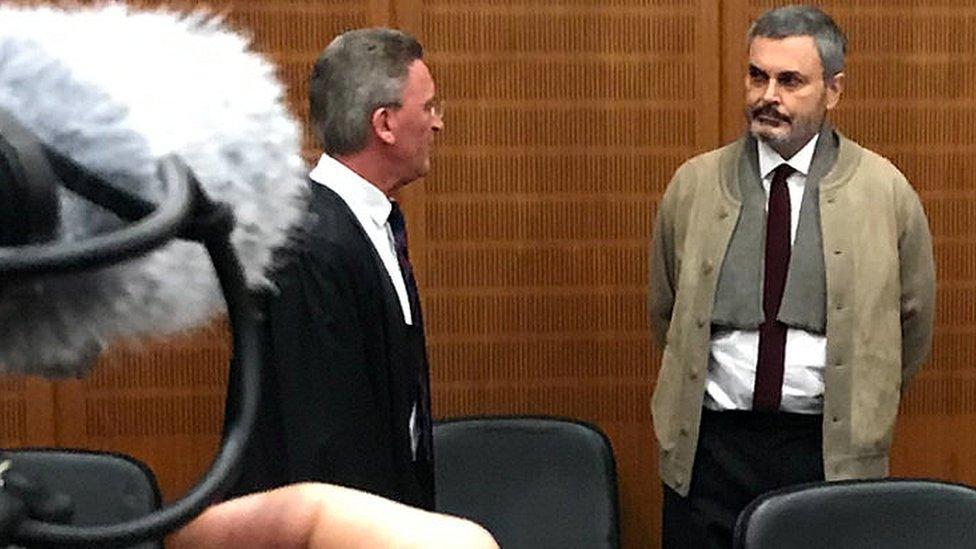Swedish 'laser man' Ausonius on trial for 1992 German murder
- Published

John Ausonius (r) denies the killing but did not oppose extradition to Germany
A Swedish right-wing extremist serving life for a spate of racially-motivated attacks in the 1990s has gone on trial in Germany accused of murder.
John Ausonius, dubbed "the laser man" because of the laser sight on his gun, killed one person and injured 10 others in the Stockholm area in 1991-92.
German prosecutors say he also shot dead a woman in Frankfurt in 1992. He denies the charge.
Ausonius's crimes are believed to have inspired the Norwegian Anders Breivik.
Although Ausonius denies the Frankfurt killing, he did not oppose extradition to Germany on condition that he serve any possible jail sentence in Sweden.
According to the Frankfurt prosecutor's office, Ausonius shot the 68-year-old woman dead in broad daylight while on the run after the shootings in Sweden.
He is alleged to have accused her of stealing an electronic notebook from his coat pocket in the hotel where she worked.
The victim, Blanka Zmigrod, was a survivor of Nazi concentration camps including Auschwitz, Swedish media reported.
Ausonius became one of Sweden's most notorious criminals after he stalked the streets of Stockholm shooting at immigrants. He was jailed for life in 1994.
Some of his victims noticed a bead of red light on their clothes shortly before they were shot, leading him to become known as Lasermannen - the laser man.
As well as inspiring Anders Breivik - who killed 77 people in 2011 - Ausonius's attacks were also believed to have motivated the Swedish killer Peter Mangs and the German neo-Nazi group National Socialist Underground (NSU).
- Published28 October 2010
- Published22 October 2010